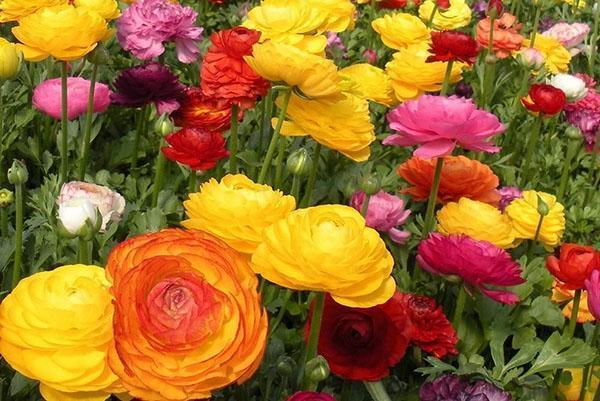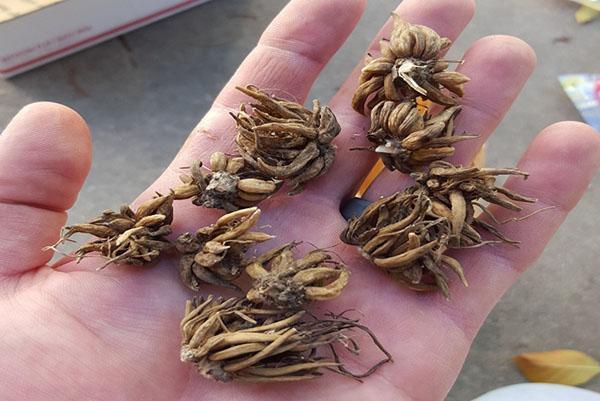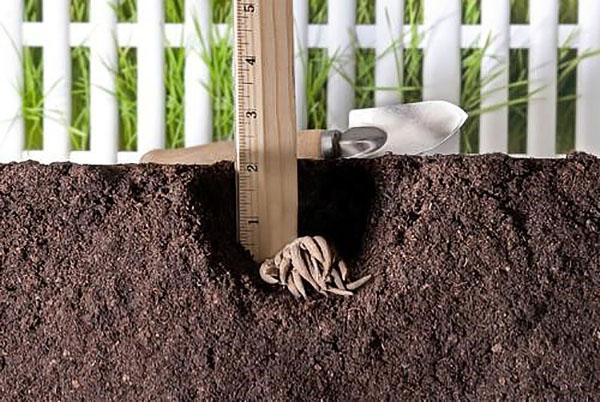We grow capricious ranunculus - planting and care in the open field
 Various types of buttercups are found in Europe, Asia and Africa. The subject of interest for gardeners is the cultivation of Asian plants, better known as ranunculus, planting and outdoor care for these spectacular flowers with semi-double or terry corollas.
Various types of buttercups are found in Europe, Asia and Africa. The subject of interest for gardeners is the cultivation of Asian plants, better known as ranunculus, planting and outdoor care for these spectacular flowers with semi-double or terry corollas.
The magnificent flowers resembling roses fall in love at first sight, but only the most purposeful and patient summer residents will be able to see them in their flower beds.
Read also: lisianthus - photo and description!
Planting ranunculus in open ground in spring

The time to plant ranunculus outdoors in spring depends on the climate of the particular region. Suitable conditions in the middle lane begin in mid-April and persist until the end of May. The soil in the garden has warmed up enough, but it still stores thawed moisture. This will help the Asiatic buttercup to awaken to form friendly shoots.
If the spring is protracted, and there is a danger of returning cold, it is better to cover the planting with a greenhouse or pre-plant the awakening tubers in large peat pots.
If the ranunculus rhizomes stored in the fall or bought the day before have dried up, before they get to flower beds, tubers are immersed in a growth stimulator solution for 12-24 hours and treated with potassium permanganate.
To simplify the care of ranunculus in the open field, planting is planned where buttercups will be well lit, but will not be affected by wind and hot midday sun. If the groundwater at the site is close, drainage must be provided, and a loose fertile substrate is also prepared.
 In the spring, planting ranunculus in open ground is carried out to a depth of 5–7 centimeters, while leaving a gap of about 15 cm between the plants, which will be required by the growing rosettes of cut leaves.
In the spring, planting ranunculus in open ground is carried out to a depth of 5–7 centimeters, while leaving a gap of about 15 cm between the plants, which will be required by the growing rosettes of cut leaves.
If the plant receives proper care, young tubers appear on each adult rhizome in the fall, which are separated and also stored until spring. The next year, the children are planted along with other buttercups, and the strongest ones can bloom contribute to the natural rejuvenation of the collection.
Ranunculus care after planting in open ground
 The weather in spring is changeable, so the first thing to do after planting ranunculus in the ground in Siberia, the Urals or the Non-Black Earth Region is to cover the area with a film or non-woven covering material. Such protection will not be superfluous until the sprouts hatch and gain strength.
The weather in spring is changeable, so the first thing to do after planting ranunculus in the ground in Siberia, the Urals or the Non-Black Earth Region is to cover the area with a film or non-woven covering material. Such protection will not be superfluous until the sprouts hatch and gain strength.
The greenery above the flower bed is shown in 10-12 days. Since the plant is moisture-loving, the soil surface above the tubers can be mulch... This will save time on maintenance:
- will keep water in the ground;
- will not let the roots dry out or rot due to an incorrectly selected watering regime;
- will prevent or slow down the growth of weeds.
For buttercups, it is equally dangerous to dry out and excessive watering, which can cause rotting and the development of bacterial infections.After planting in open ground, ranunculus care does not end with traditional procedures.
 The lush flowering of a buttercup requires abundant nutrition. Plant feeding is carried out immediately after planting. Liquid organic fertilizerinfusion of humus or manure, for example, stimulates the mouth of the greens. Then young sockets with watering give a complex mineral fertilizer with a high potassium content.
The lush flowering of a buttercup requires abundant nutrition. Plant feeding is carried out immediately after planting. Liquid organic fertilizerinfusion of humus or manure, for example, stimulates the mouth of the greens. Then young sockets with watering give a complex mineral fertilizer with a high potassium content.
Regular feeding of ranunculus is carried out while the plant is blooming. They not only stimulate growth and flowering, but also help replenish strength, accumulate nutrients for the next season.
When to dig the ranunculus out of the open ground? The Asian buttercup itself will tell you the right moment. After the flowers wither, the foliage begins to wither, a new one is almost not formed.
 Small, finger-like tubers and digging are easy to damage, so they:
Small, finger-like tubers and digging are easy to damage, so they:
- removed very carefully;
- then dried;
- sort out, separating tubers with traces of rot, damage by insects or fungi;
- stacked in containers, layered with paper.
Damaged rhizomes, if the damage is small, can be preserved by treating them with hot water heated to 50–55 ° C before storage, and then with a systemic fungicide.
If the planting was carried out correctly, and then the plants receive full care, they will certainly delight the gardener with incredible beauty and tenderness of flowering, lasting more than a month.